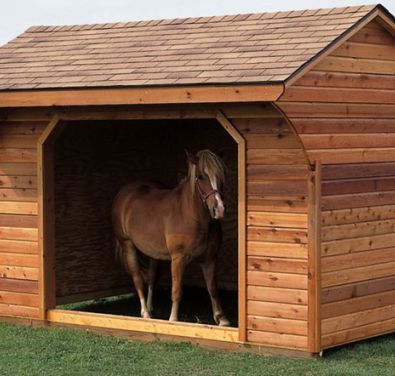-
Recent Posts
-

How to Refinish Your Wood Floors and Give Your Home a New Look
April 03, 2023 By admin -

Why Septic Tank Riser Is A Worthy Idea For Your Septic System?
March 21, 2023 By admin -

The Top Ten Benefits of Hiring a Furniture Removal Service
March 02, 2023 By admin -

Benefits of Switching from Natural Grass to Fake Grass
February 25, 2023 By admin
-
Determining Proper Aisle Width and Stall Size in Your Horse Barn

The comfort of your horses must be your foremost concern when designing a new barn. The designing process must begin by determining the proper width of the aisles and the right size of the stalls. Rest of the barn features can be accommodated around these parameters.
But before you can begin to design the aisle and the stalls, it is crucial to understand the significance of the right dimensions.
The Significance of the Right Aisle Width and the Stall Size
Most people (especially first-time barn builders) neglect the importance of suitable aisle width not really realizing its role for both equine and human comfort. Stall size is something people remember to pay attention to automatically given the size of the horses! But as you start using the barn, it is easier to see its significance.
It is best to first plan for the aisle and the stall/s before planning the feed room, the tack storage, and any additional areas for horse grooming activities.
It is best to work with a local builder to help you create the perfect barn design. So, for horse barns in Spotsylvania, contact a local builder with expertise and experience in designing weather-appropriate structures for horses. It will help you design the aisle, stalls, and other features using the right materials and the dimensions.
Determining the Aisle Width
When deciding on the aisle width for the barn, always consider the size of the horses. A width of 12 ft is sufficient for the horses to walk and turn around the aisle without any problem. If you need to move heavy equipment around the barn and through the aisle, consider it when planning the aisle width. Would you be able to move stuff past the aisle if it is 12-foot wide? Often a 10-foot wide aisle can also work well depending on the sizes of the horse/s.
In any case, the width of the aisle must not be less than 10 ft. If you have the scope to increase it to 12 ft, it is always better to go with it. A wider aisle will also come in handy in the future in case more horses would be sharing the barn.
One way to determine the right aisle width is to think of all the functions you would be performing using this part of the barn. The horse barn design needs to be comfortable for the horses but also functional for you. A narrow aisle can help you save some money initially. But eventually, you (and the horses) would start to feel the discomfort due to the space constraints.
Determining the Stall Size
If your horses are of the average size then the most suitable stall size is 12-foot by 12-foot approximately. A pony might do well in a relatively smaller stall as well. Some horses such as thoroughbreds are bigger than the average equine size (15-hands approximately) and you might need to increase the stall dimensions for them. The same applies if you have mares that would be foaling in the near future or are already with foals.
Even if you don’t have a broodmare when designing the barn but plan to get one in the future, it is best to incorporate provisions for a bigger stall. The consideration must be that the horses, irrespective of their sizes, must be able to move inside the stalls comfortably. Know that movement means turning around comfortably in all directions. The horses must also be able to lie down easily.
The size of the stall walls must be around 5 ft at least. It is also a good idea to use grills on the walls so that horses can see each other through them. The grills or even the mesh on the walls can help bring more light inside the barn and also help with the ventilation. These two factors are important for the good health of the horses living in the barn. So, choose the size of the stalls walls keeping these functions in mind.
Sliding doors on the stalls can help save some space. But swinging doors can work too as the stall doors are often shut.
